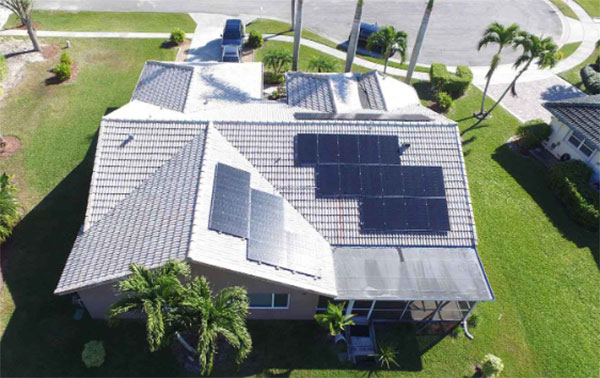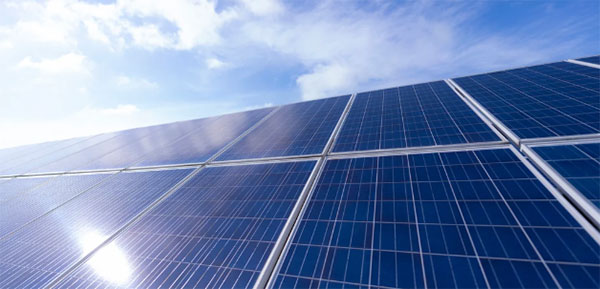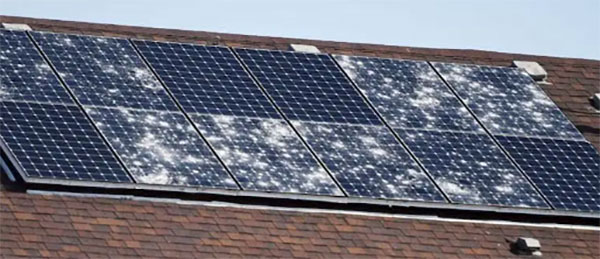Description
Installing solar panels in Florida costs between $10,000 to $25,000 after incentives, depending on system size and efficiency.

Overview of Solar Panel Installation in Florida
Florida, often referred to as the Sunshine State, offers an abundant supply of solar resources, making it an ideal location for installing solar panels on residential properties. The state's solar energy sector has seen significant growth due to its favorable climate, supportive policies, and financial incentives.
Factors Affecting the Cost of Solar Panels
Cost Variability: The cost of solar panel installation in Florida can vary widely, typically ranging from
$10,000 to $25,000 after tax credits and rebates. This variability is influenced by several key factors:
- Solar Panel Quality and Efficiency: Higher efficiency panels are more expensive but require less space. Prices can range from $0.70 to $1.50 per watt.
- System Size: The average system size for a residential setup is around 5 kW to 10 kW, directly impacting the overall cost.
- Installation Complexity: Roof type, angle, and the need for additional hardware can affect installation costs.
Energy Savings: Homeowners in Florida can expect to save between
$1,000 and $2,000 annually on their electricity bills, with systems paying for themselves in
9 to 12 years.
Benefits of Solar Energy in Florida
Financial Incentives: Florida offers various incentives like the
Federal Solar Tax Credit, which allows for a 26% deduction of the installation cost from federal taxes, and local rebates that further reduce initial expenses.
Increased Property Value: Homes with solar panels have been shown to increase in value by approximately
4%, making solar investments not only environmentally friendly but also financially wise.
Environmental Impact: Utilizing solar energy significantly reduces carbon footprints, equivalent to planting over
100 trees annually for each household.
Energy Independence: Solar power provides homeowners with a measure of independence from utility companies, safeguarding against fluctuating energy prices and potential outages.

Cost Analysis of Solar Panel Installation
Installing solar panels in Florida is an investment that offers significant financial benefits and contributes to a sustainable future. Understanding the costs and incentives associated with solar panel installation is crucial for homeowners considering making this green energy transition.
Initial Installation Costs
The initial installation costs for solar panels in Florida can vary widely depending on several factors, including the system's size, the type of solar panels used, and the complexity of the installation. On average, homeowners can expect to pay between
$2.50 and $3.50 per watt, with a typical 5 kW system costing between
$12,500 and $17,500 before any incentives or rebates.
Key factors influencing cost include:
System Size: The larger the system, the higher the upfront cost. However, larger systems also yield greater electricity savings.
Panel Type: High-efficiency panels like monocrystalline silicon are more expensive but generate more electricity per square foot.
Installation Complexity: Difficult roof layouts or additional system components like battery storage can increase installation costs.
Bold Assertion: Investing in a solar panel system can significantly reduce monthly electricity bills, with many homeowners seeing a 100% reduction in their bills.
Federal and State Incentives for Solar Energy
To encourage the adoption of solar energy, both the federal government and the state of Florida offer incentives that can substantially reduce the cost of solar panel installation.
Federal Solar Investment Tax Credit (ITC): Homeowners can deduct
26% of the cost of installing a solar energy system from their federal taxes with no upper limit through 2022. This credit drops to
22% in 2023 and is set to expire by 2024 unless renewed by Congress.
Florida's Solar Incentives: Florida offers additional incentives such as sales tax exemptions on solar equipment and property tax exemption for the added home value from solar panel installations.
Key Insight: The combination of federal and state incentives can reduce the overall cost of solar panel installation by up to 50% in some cases.
Average Payback Period in Florida
The payback period for solar panel installations in Florida is influenced by the cost of the system, available incentives, and the amount of electricity generated. On average, the payback period in Florida ranges from
6 to 8 years.
- Electricity Savings: Solar panel systems can save homeowners an average of $1,200 to $2,000 annually on their electricity bills.
- Increased Home Value: Solar installations increase home value by an average of 4%, enhancing the investment's return.

Types of Solar Panels and Their Costs
When considering solar panel installation, understanding the different types of solar panels and their respective costs is crucial. Each type offers unique benefits and efficiencies, impacting the overall performance and cost-effectiveness of your solar energy system.
Monocrystalline Solar Panels
Monocrystalline solar panels are known for their high efficiency and durability. They are made from a single, pure silicon crystal, which allows them to convert more sunlight into electricity than other types.
- Efficiency: Typically ranges from 18% to 22%.
- Cost: Prices for monocrystalline panels can vary, generally falling between $1.00 and $1.50 per watt.
- Lifespan: Can last more than 25 years, making them a long-term investment.
- Advantages: Include a higher power output and a sleeker aesthetic due to their dark color.
- Disadvantages: The high purity of silicon makes them the most expensive type of solar panel.
Bold Fact: Monocrystalline panels are the best option for efficiency and space-saving, but they come at a higher initial cost.
Polycrystalline Solar Panels
Polycrystalline solar panels, also known as multi-crystalline panels, are made from fragments of silicon crystals melted together. They are a more cost-effective option compared to monocrystalline panels.
- Efficiency: They have an efficiency rating of 15% to 17%.
- Cost: They are priced at about $0.90 to $1.00 per watt, making them more affordable than monocrystalline panels.
- Lifespan: Have a slightly shorter lifespan, typically 20 to 25 years.
- Advantages: Lower cost and a simpler manufacturing process make them an economical choice.
- Disadvantages: Lower efficiency and a less uniform appearance due to their blue hue.
Bold Insight: Polycrystalline panels offer a balance between cost and efficiency, ideal for those with more roof space.
Thin-Film Solar Panels
Thin-film solar panels are made by depositing one or more thin layers of photovoltaic material onto a substrate. These panels are known for their flexibility and lightweight properties.
- Efficiency: Generally has lower efficiency, around 10% to 13%.
- Cost: The cost per watt can be as low as $0.70 to $1.00, depending on the material used.
- Lifespan: They have the shortest lifespan, about 15 to 20 years.
- Advantages: Can be installed on a variety of surfaces and are less affected by high temperatures.
- Disadvantages: Their lower efficiency requires more space for the same electrical output, and they degrade faster than silicon-based panels.

Financing Solar Panel Installation in Florida
Financing solar panel installations in Florida offers homeowners a variety of options to reduce initial costs and maximize long-term savings. Understanding the terms and benefits of different financing methods is crucial for making an informed decision.
Solar Loans and Their Terms
Solar loans are a popular financing option, providing the means to purchase a solar system outright without the need for upfront cash.
- Interest Rates: Typically range from 1.99% to 4.99%, varying by lender and creditworthiness.
- Loan Terms: Can extend from 10 to 20 years, allowing for manageable monthly payments.
- Ownership: The homeowner owns the system, qualifying for tax credits and incentives.
- Advantages: Immediate ownership of the solar system and access to all incentives.
- Disadvantages: Interest adds to the total cost of the system over time.
Bold Statement: Solar loans enable homeowners to invest in solar energy with minimal initial expense, leading to significant long-term savings.
Solar Leasing and Power Purchase Agreements (PPAs)
Solar leasing and PPAs offer an alternative to outright purchase, where the solar company owns and maintains the system on your property.
- Monthly Payments: Based on a fixed lease rate or the amount of electricity generated.
- No Upfront Costs: Little to no upfront investment required.
- Maintenance: The solar company is responsible for system maintenance.
- Advantages: No maintenance worries and immediate savings on electricity bills.
- Disadvantages: The homeowner does not qualify for tax credits or incentives, and long-term savings are less than owning the system.
Bold Insight: Leasing or PPAs can offer immediate savings with no upfront costs, but they don't provide the same financial benefits as owning the system.
Savings Through Net Metering
Net metering allows homeowners with solar panel systems to sell excess electricity back to the grid, further reducing their energy bills.
- Compensation: Homeowners are credited for the excess electricity at the same rate they are charged for consumption.
- Annual Settlements: Unused credits are typically settled annually, either as a rollover for future bills or a cash payment.
- Advantages: Maximizes the value of electricity produced and can significantly reduce annual electricity costs.
- Disadvantages: Policies vary by utility and may change over time, impacting savings.

Installation Process and Additional Costs
The journey to harnessing solar energy involves several steps from site assessment to the eventual maintenance of the system. Each phase comes with its costs, essential for homeowners to budget for a smooth transition to solar power.
Site Assessment and Design
Before installation, a thorough site assessment is conducted to determine the best configuration for your solar system.
- Factors Considered: Sunlight exposure, roof condition, and local climate.
- Cost: Generally ranges from $100 to $500, depending on the complexity of the project.
- Outcome: A customized solar panel system design that maximizes efficiency and meets the homeowner's energy needs.
Bold Fact: A detailed site assessment ensures optimal placement and orientation of solar panels, crucial for maximizing energy production.
Permitting and Inspection Fees
Securing the necessary permits and passing inspections are critical steps in the solar panel installation process.
- Permitting Costs: Can vary widely by locality, typically between $100 to $1,000.
- Inspection Fees: Some jurisdictions require one or more inspections, with fees ranging from $75 to $250.
- Importance: Ensures the solar panel system complies with local building codes and safety standards.
Bold Insight: Navigating the permitting and inspection process can be complex, but it's essential for legal compliance and safety.
Maintenance and Repair Costs
Solar panel systems require minimal maintenance, but occasional repairs and regular inspections ensure long-term efficiency.
- Annual Maintenance: Includes cleaning panels and checking connections, usually under $300 for typical residential systems.
- Repair Costs: Depend on the issue but can range from $200 to $800 for inverter replacement, one of the more common repairs.
- Lifespan: Most solar panel systems have a lifespan of 25 to 30 years, with inverters needing replacement every 10 to 15 years.

Impact of Solar Panel Installation on Property Values in Florida
Installing solar panels in Florida not only contributes to a sustainable environment but also has a significant positive impact on property values. Understanding the financial implications of solar investments can help homeowners make informed decisions.
Increase in Home Value Post-Installation
Solar panel installations in Florida have been shown to increase home values significantly.
Value Increase: Homes with solar panels can see an increase in value by approximately
4% to 6% compared to homes without solar systems.
Market Appeal: Solar-equipped homes often sell faster than non-solar homes, attracting buyers interested in lower utility bills and environmental sustainability.
Investment Return: The initial cost of solar installation is typically recouped at the time of sale, thanks to the higher resale value.
Bold Fact: A solar panel system not only reduces or eliminates electricity bills but also acts as a robust investment that increases the property's resale value.
Considerations for Homeowners Insurance
When adding solar panels to your home, it's important to consider how this affects your homeowners insurance.
Insurance Coverage: Most policies cover solar panels as part of the home structure, but it's crucial to confirm with your provider.
Potential Premium Changes: While solar panels can slightly increase insurance premiums due to their value, the increase is generally offset by the long-term savings on electricity.
Damage and Liability: Ensure that your policy covers potential damage to the solar panels and any liability issues arising from the installation.









